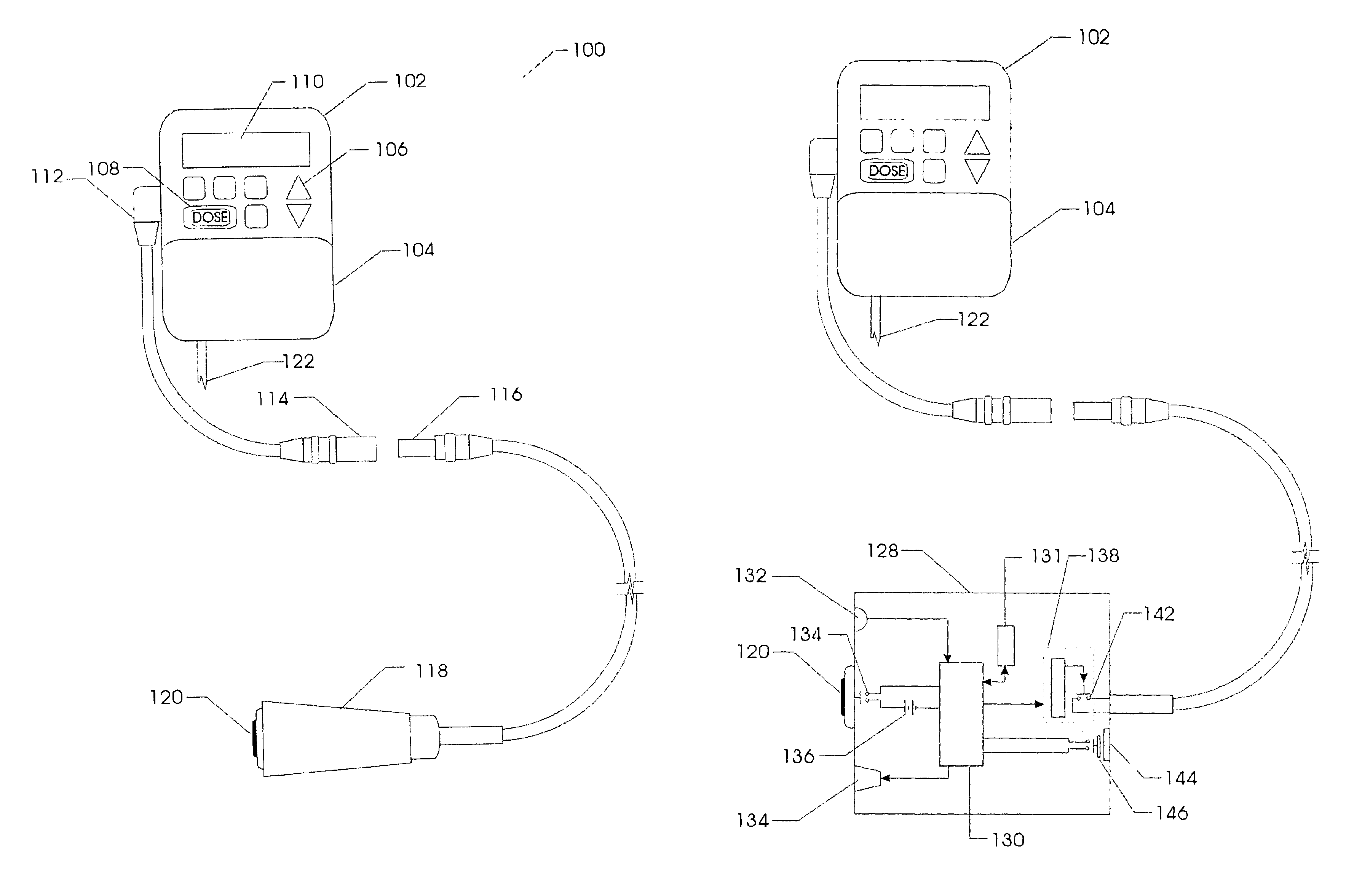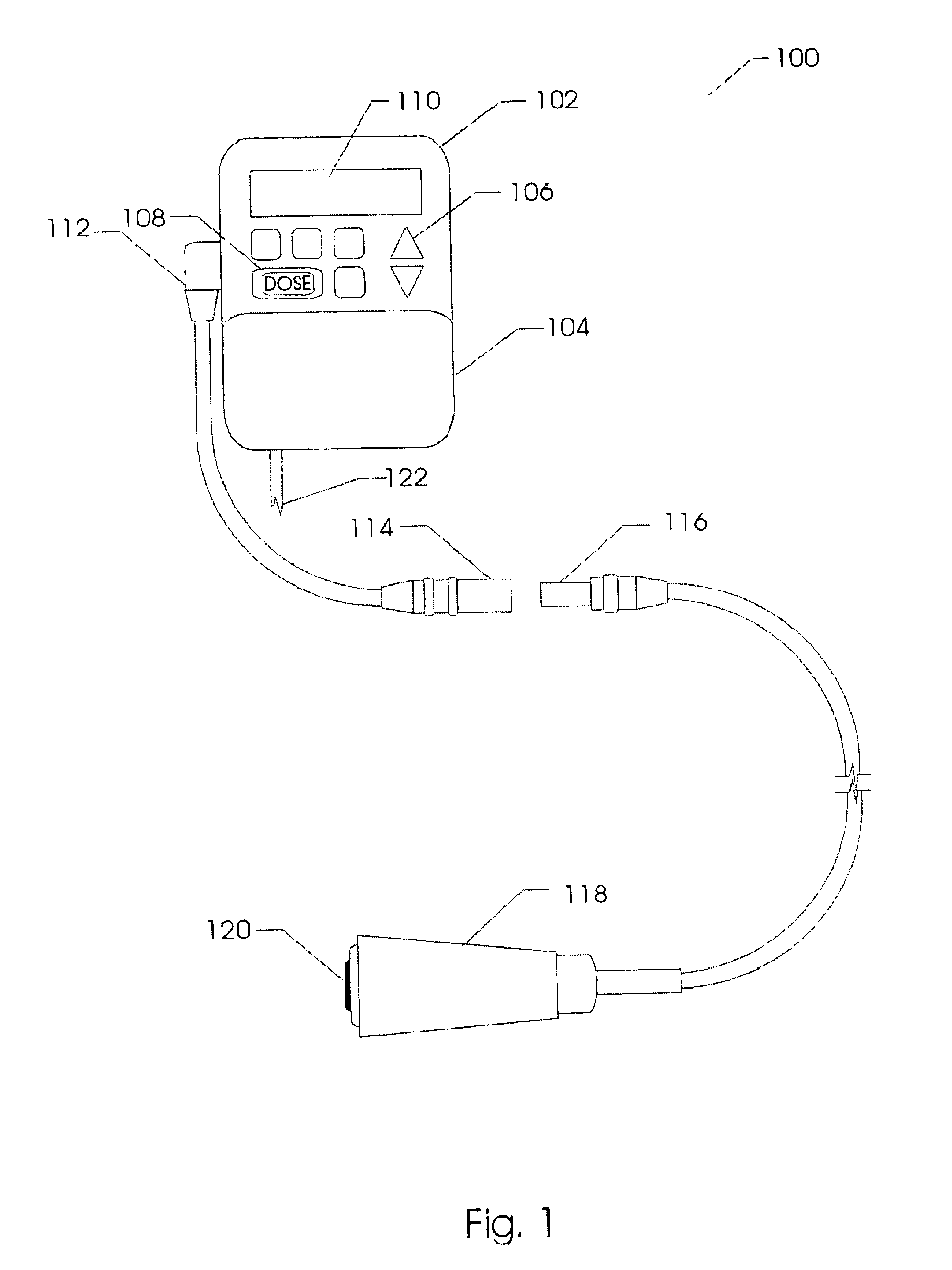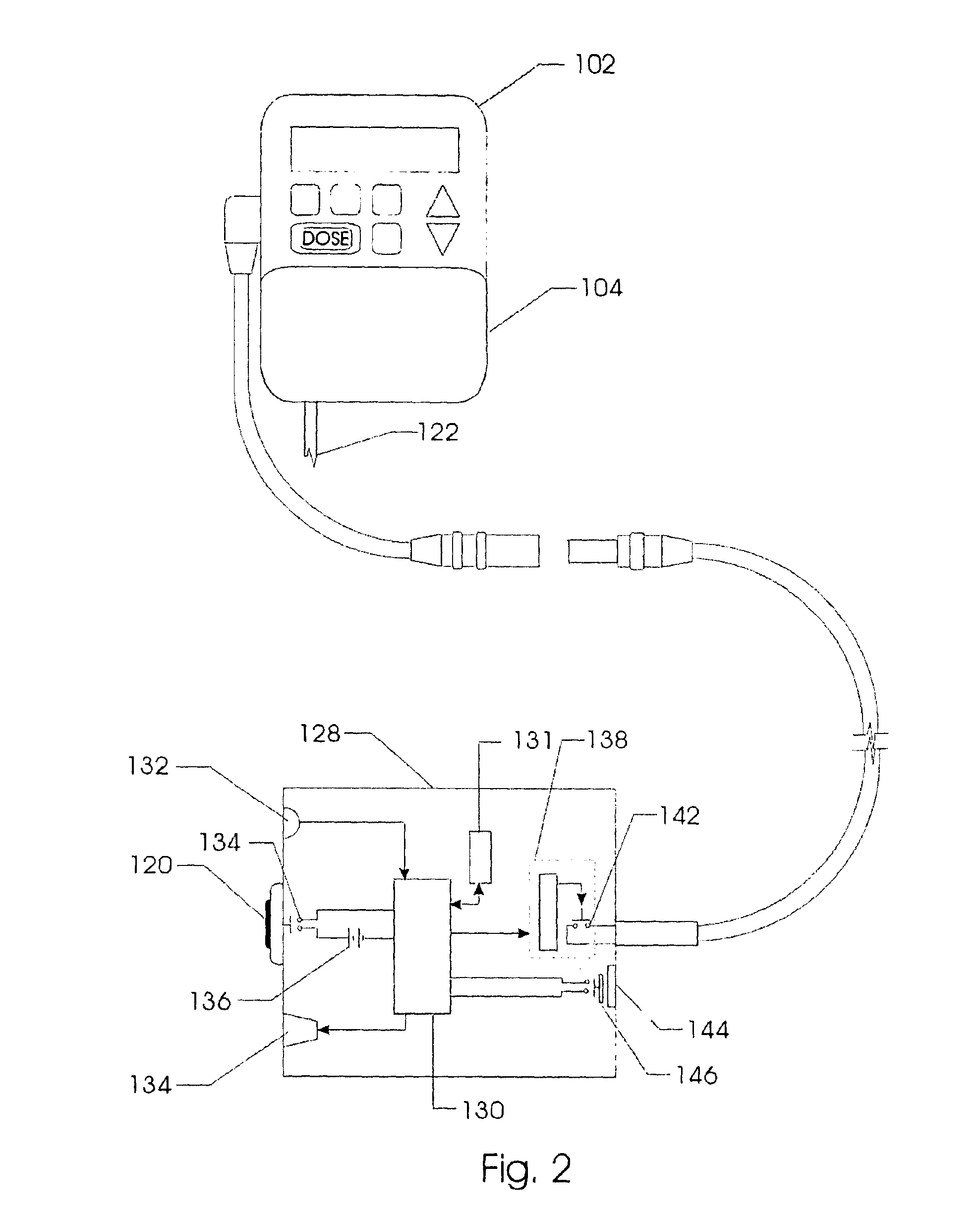Medication security apparatus and method
a technology of medication security and apparatus, applied in the field of infusion pumps, can solve the problem that unauthorized people cannot give the patient a bolus dose from the pca, and achieve the effect of reducing the risk of infection and preventing infection
- Summary
- Abstract
- Description
- Claims
- Application Information
AI Technical Summary
Benefits of technology
Problems solved by technology
Method used
Image
Examples
Embodiment Construction
[0017]FIG. 1 depicts a conventional PCA device with a remote / cord button 100. The housing contains the analgesic container 104 and the electronics and pump portion 102. In the electronics part 102 of the device there are scroll keys 106 and a keyboard keys 108 including a “dose” key, and a display 110 which is a liquid crystal display (“LCD”). In use, the clinician will program the device using a combination of the function keys 108 and scroll keys 106 while monitoring the LCD 110. Once the desired frequency and volume of the analgesic is set the unit is “locked” by activating a software locking feature. The PCA is typically mounted behind the patient's bed on a wheeled pole which permits the patient to walk with the PCA as desired. The remote dose feature is comprised of a connector 112 that plugs into the electronic portion 102 of the device and terminates into a connector 114. A mating connector 116 may be plugged into it and consists of a length of cable terminating in a housing...
PUM
 Login to View More
Login to View More Abstract
Description
Claims
Application Information
 Login to View More
Login to View More - R&D
- Intellectual Property
- Life Sciences
- Materials
- Tech Scout
- Unparalleled Data Quality
- Higher Quality Content
- 60% Fewer Hallucinations
Browse by: Latest US Patents, China's latest patents, Technical Efficacy Thesaurus, Application Domain, Technology Topic, Popular Technical Reports.
© 2025 PatSnap. All rights reserved.Legal|Privacy policy|Modern Slavery Act Transparency Statement|Sitemap|About US| Contact US: help@patsnap.com



